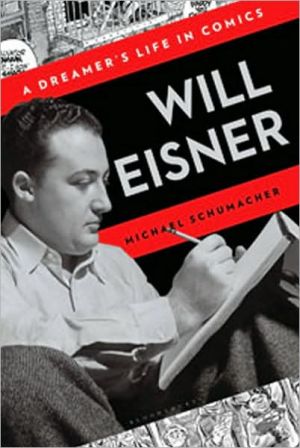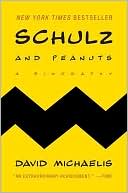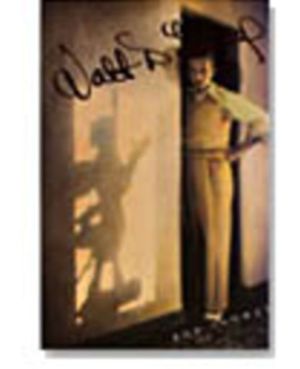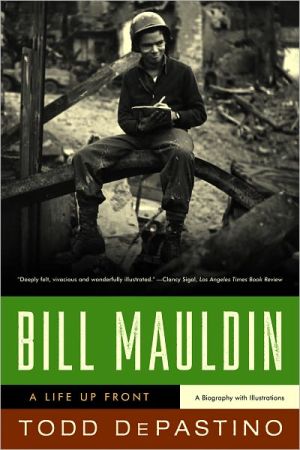Will Eisner: A Dreamer's Life in Comics
In Will Eisner: A Dreamer's Life in Comics, Michael Schumacher delves beneath Eisner's public persona to draw connections between his life and his art. Eisner's career spanned a remarkable eight decades, from his scrappy survival at the dawn of comics' Golden Age in the late 1930s to the beginning of the twenty-first century, when Pulitzers began going to graphic novels (a term Eisner is widely credited with creating). Schumacher's extensive research and interviews with Eisner's family,...
Search in google:
In Will Eisner: A Dreamer's Life in Comics, Michael Schumacher delves beneath Eisner's public persona to draw connections between his life and his art. Eisner's career spanned a remarkable eight decades, from his scrappy survival at the dawn of comics' Golden Age in the late 1930s to the beginning of the twenty-first century, when Pulitzers began going to graphic novels (a term Eisner is widely credited with creating). Schumacher's extensive research and interviews with Eisner's family, friends, and colleagues, as well as other comics creators who have built upon his work, create a detailed portrait of Eisner the man and Eisner the artist.Publishers WeeklyAn iconic figure in the world of comics, Will Eisner has stellar achievements worthy of the reverence shown by Schumacher (Wreck of the Carl D.). Fortified by intimate interviews, Schumacher's work shows an outsider during a Depression-era childhood, "an artistic dreamer and steely realist" determined to use his exceptional talent to forge a career. Eisner, his skills sharpened by an apprenticeship and a stint at Manhattan's noted Art Students League, created one of the first comics syndicates at a peak in the comics trend in the 1930s and '40s, recruiting such top names as Lou Fine, Bob Kane, and Jack Kirby. Despite wars, a congressional probe on the "immorality" of comics, and the cancer death of his daughter, Eisner produced remarkable work over eight decades: as a young artist, as the creator of a classic superhero, the Spirit, and as the father of the American graphic novel with his Contract with God trilogy. This exploration of Eisner, with photos and drawings, provides an absorbing glimpse of an American original who continually set the bar higher in his field. (Dec.)
\ Publishers WeeklyAn iconic figure in the world of comics, Will Eisner has stellar achievements worthy of the reverence shown by Schumacher (Wreck of the Carl D.). Fortified by intimate interviews, Schumacher's work shows an outsider during a Depression-era childhood, "an artistic dreamer and steely realist" determined to use his exceptional talent to forge a career. Eisner, his skills sharpened by an apprenticeship and a stint at Manhattan's noted Art Students League, created one of the first comics syndicates at a peak in the comics trend in the 1930s and '40s, recruiting such top names as Lou Fine, Bob Kane, and Jack Kirby. Despite wars, a congressional probe on the "immorality" of comics, and the cancer death of his daughter, Eisner produced remarkable work over eight decades: as a young artist, as the creator of a classic superhero, the Spirit, and as the father of the American graphic novel with his Contract with God trilogy. This exploration of Eisner, with photos and drawings, provides an absorbing glimpse of an American original who continually set the bar higher in his field. (Dec.)\ \ \ \ \ From the Publisher“Fifty, sixty years ago, Will Eisner was an oddity and a weirdo. In a world of people who were writing or drawing comics until they could find more respectable work, who lied to their friends about what they did, people who couldn't wait to get out and make real money, make real art, Will was one of the few people convinced that this nascent mixture of words and pictures really was an art form. Other people believed it was about the quick buck. Will was certain, against much of the available evidence, that there could be well-written comics, well-drawn comics, and that the strange magic of comics that comes from combining sequential pictures and words into a story was really something powerful and unique and true.”—Neil Gaiman, author of the Sandman series\ \ “From the first superheroes—including his iconic Spirit—to the most revered modern literary graphic novels, Will Eisner was not only there—he virtually started it all. In Will Eisner: A Dreamer’s Life in Comics, Michael Schumacher insightfully and entertainingly weaves Eisner’s personal and professional history with that of America and pop culture in general, and thereby makes a great contribution to our understanding of the whole megilla.”—Danny Fingeroth, author of Disguised as Clark Kent: Jews, Comics, and the Creation of the Superhero\ \ “With A Contract with God, Eisner was a man in complete command. With that one book, he changed the way everybody thought about comics. He went straight at the artists with it. All of a sudden we changed our outlook: I saw my work and comic book work as something that would stay alive instead of being an ephemeral, month-to-month event.”—Frank Miller\ \ “Will Eisner was to comics what Babe Ruth was to baseball. Not only a fantastic artist and designer but a brilliant story teller as well, he helped transform the image of the once-lowly comic book into today’s widely respected medium of sequential art.”—Stan Lee\ \ “Demonstrates Schumacher’s intense passion for, and deep knowledge of, his subject…Engaging for both the curious and the ardent fan.” – Kirkus Reviews\ \ \ \ Kirkus ReviewsThis biography of visionary pioneer Will Eisner (1917–2005) also includes a compact history of the progression from comic books to graphic novels.\ Though Eisner's 1940s hero, The Spirit, never achieved as much subsequent mainstream cultural currency as Superman or Batman, no comics artist has been more influential or prophetic. Even before the great comics scare of the '50s, during which the medium was widely condemned as a corrupting influence on the nation's youth, Eisner proclaimed his intentions: "Comics—sequential art—is my medium. I regard it as much my singular medium as a writer who writes only words or the motion-picture man who writes only in movies...it has perimeters and it has parameters; it has grammar; it has distinct rules; it has limitations; and it has possibilities which have not really been touched." Eisner lived to not only see his manifesto fulfilled by a new generation of "underground" artists, but he was inspired by their popularity to create the most conceptually ambitious work of his career, following a hiatus of a couple of decades. Schumacher (Wreck of the Carl D.: A True Story of Loss, Survival, and Rescue at Sea, 2008, etc.) draws heavily from other sources for a competent detailing of his emergence into the profession, yet the book really comes alive when it advances to his artistic resurrection, through interviews with many of those inspired by Eisner and critical commentary that demonstrates Schumacher's intense passion for, and deep knowledge of, his subject. "His work was his therapy," writes the author of the death of Eisner's teenage daughter, "and later, when the time was right, he would creatively combine his work and grief into a sequential art form that would help change the direction of comics."\ Engaging for both the curious and the ardent fan.\ \ \








